By Sean Fagan
.
HOW TO USE BALSAM FIR RESIN
FOR
CUTS, BURNS & FIRES
.
Resin is commonly found as a thick, sticky excretion on the bark of many coniferous tree species.
For example, if I make a cut on the bark of a Norway spruce (Picea abies), resin will slowly ooze out, gradually solidifying as a hard, brittle exudation.
The purpose of this sticky excretion is to prevent the entry of infectious fungi, bacteria and insects, and to deter herbivores from consuming the foliage and bark.
The bushcraft virtues of resin are well renowned: wood varnish, cold & cough medicine, glue and sealant are just a few of its traditional uses.
There is however, one conifer tree species that excels in its production of resin - balsam fir, Abies balsamea.
A native of eastern and central Canada as well as north-eastern America, the balsam fir can also be found as a relatively common tree in the conifer tree plantations of Western Europe.
Balsam fir is relatively easy to recognise - it's a coniferous tree (evergreen) with needle-like leaves.
Each needle-like leaf is dark green above with two pale stripes (stomata) on the leaf underside. The tip of the leaves are slightly notched.
One key leaf feature is the circular base to the needles.
.
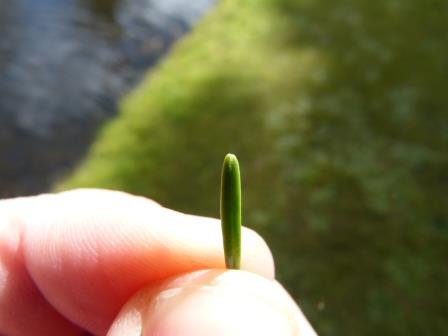
The tips of fir needles are slightly notched - a key identification feature of fir trees (Photo: Sean Fagan).
.
The bark is generally smooth in young trees, becoming more rough and scaly with age, but not overly so, even mature fir trees have, in comparison to many other conifer tree species, a relatively smooth bark.
A key feature of trees from the Abies genus is the presence of a green suction-like attachment at the base of the needle leaves.
.
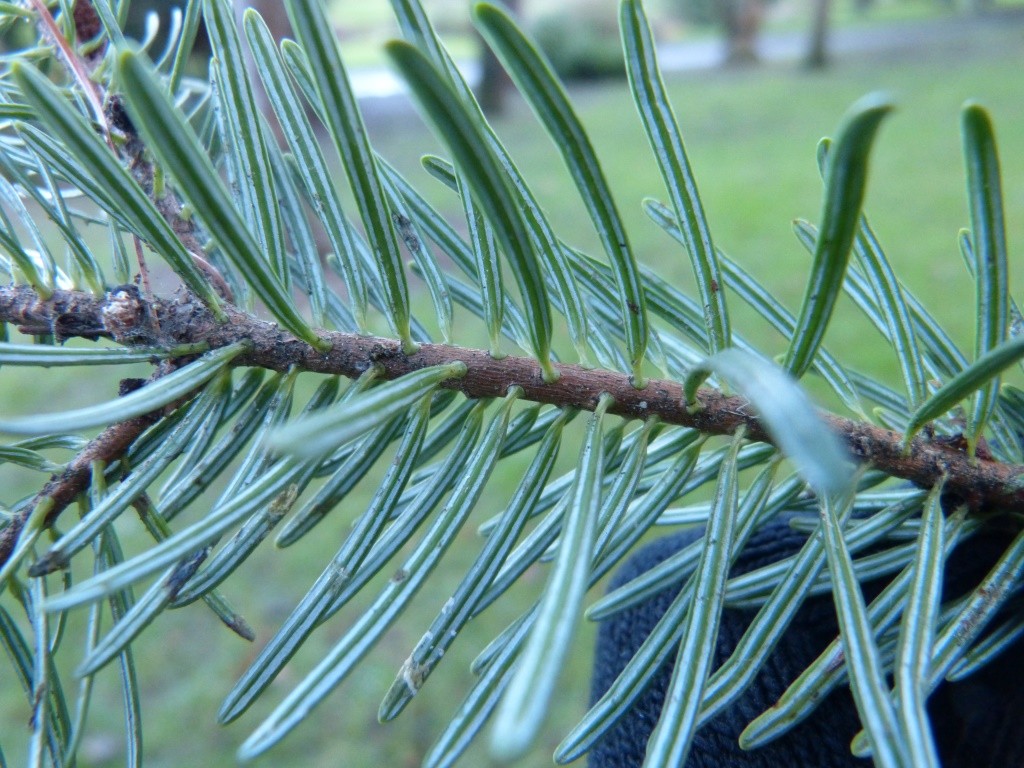
One of the defining characteristics of all fir tree species is the presence of a circular base to each needle (Photo: Sean Fagan).
.
Much of balsam fir resin is concentrated within prominent blisters on the bark. It's the resin contained within these many blisters that provides such an easily acquired bushcraft resource.
.
.3 USES OF BALSAM FIR RESIN
1. CUTS
The sheer stickiness of balsam fir resin can, when applied to a small cut, staunch bleeding.
Because of its antiseptic properties, resin also forms an effective seal against infection.
I find balsam fir resin great for awkwardly positioned cuts, such as cuts near or on the finger joints where it can be difficult to form a tight, durable seal with plasters.
When I apply the resin to awkward cuts I have uninhibited movement, which is not always the case with plasters that are stiff and restrictive.
Once, I accidentally cut the tip of my right index finger with a knife. Plasters were generally ineffective so eventually I applied a liberal amount of resin to my finger tip.
The resin worked great - forming a thick, pliable, protective seal.
.
2. BURNS
Another great application of resin is for burns. Superficial burns (epidermal, superficial & mid dermal) of the skin can be extremely painful mostly because the exposed, sensory nerve endings of the burned skin is reacting painfully with the surrounding air.
One of the modern first-aid treatments of superficial burns is to wrap the burnt skin with cling film, so as to provide a barrier between the burnt skin and the surrounding air.
This form of first-aid treatment can be easily replicated with resin.
Gently smear or pour resin onto the burn, which will form a great, air-tight, antiseptic seal which will also lessen the pain associated with the burn.
The application of resin onto burnt skin should not be considered when a large area of the skin is burned and/or when the skin forms large, fluid-filled blisters – leave such injuries for proper first-aid treatment in the field with the immediate goal of seeking professional medical treatment, preferably at the nearest hospital (if possible).
Link: How to assess Burns
.
3. FIRE-STARTER
Resin is flammable and makes an outstanding, fire-starting aid.
Simply smear the resin onto tinder and some kindling and you're almost guaranteed a fire.
Consider resin as the petrol of nature and you get the picture.
Applying resin to your tinder and kindling can give you an edge during damp days when time is tight.
An advantage of resin is that it can be smeared onto damp, sub-par tinder and kindling which ordinarily would not ignite (or is very difficult to ignite) - even with a strong flame.
When resin is smeared onto tinder and kindling and set alight, the high-heat flammability of the resin will assist in dispelling moisture from the tinder and kindling and can greatly improve the chance of obtaining a hearty fire.
.
HOW TO OBTAIN RESIN
.
Carefully place the point of the knife at the base of the blister and slowly push the tip into the blister.
For safety, try to keep the knife blade parallel to the trunk as you gently pierce the blister - very little pressure is required.
When pierced, almost instantly the resin will start to ooze out.
.
.
You can apply the resin directly as needed or you can store in a small (preferably sturdy) receptacle. The resin will keep for a long time and can be complimentary to your first-aid & fire-lighting kits.
Once, while camping in the Northern woods of Maine, a friend and I were trying to ignite a campfire.
It was a damp day and daylight was starting to fade.
We tried igniting some slightly damp dead grass with our matches. No go. Then we found some resin blisters on a nearby Balsam fir. We smeared some resin onto some freshly gathered dead grass –eureka!
And just in time too - our dusk-time brew was saved.
.
.
Related articles on this website:.
*Check us out on Instagram, Twitter & Facebook for more outdoor-related topics.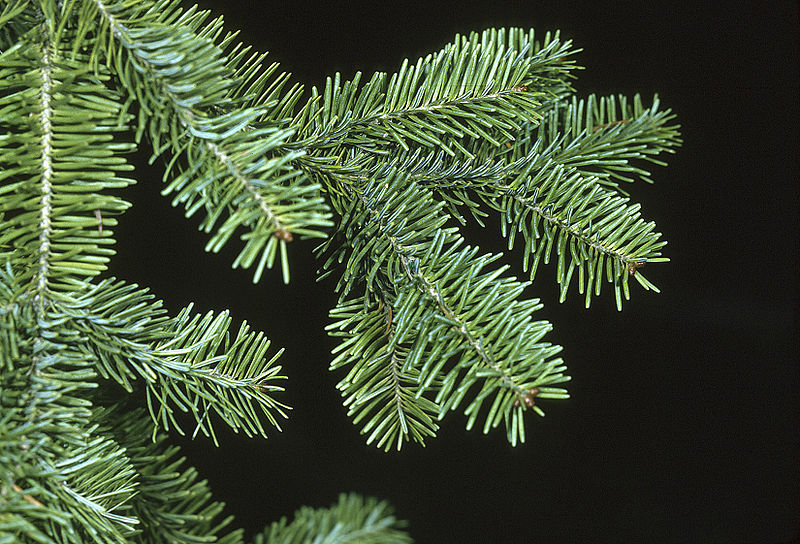
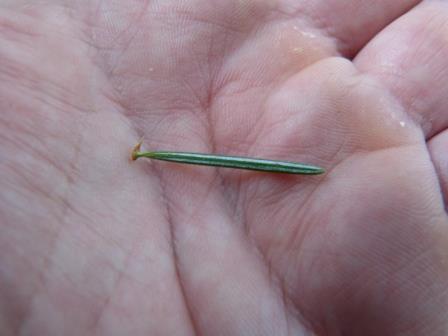
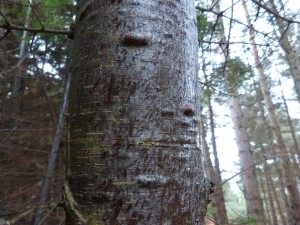
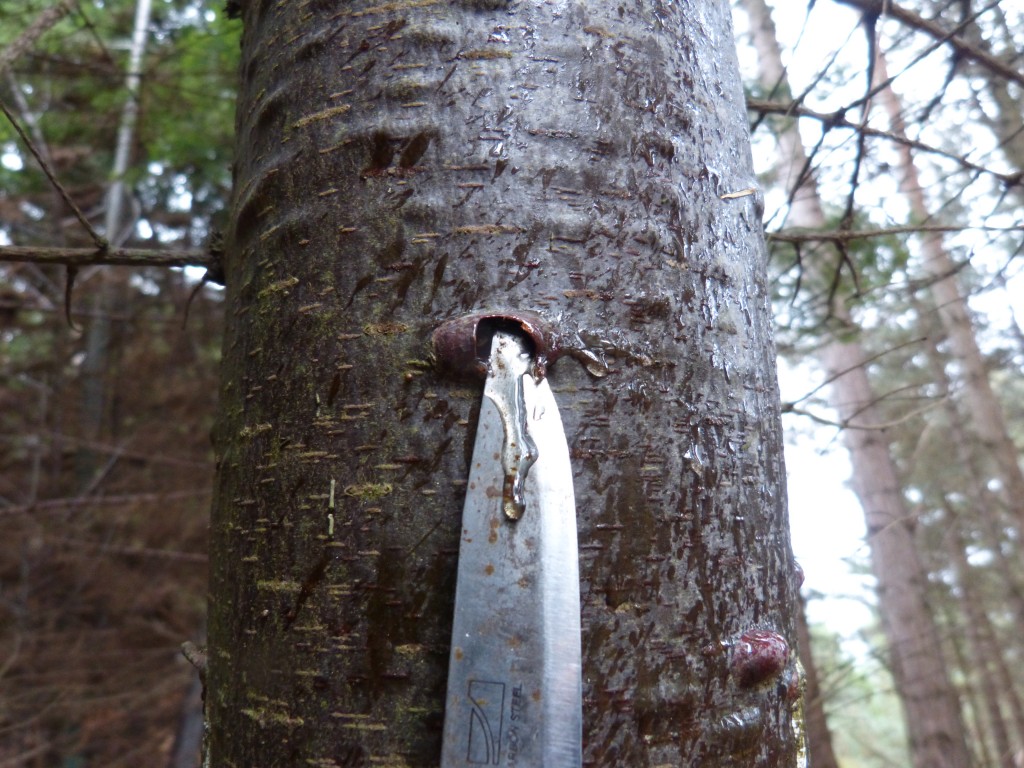

Recent Comments